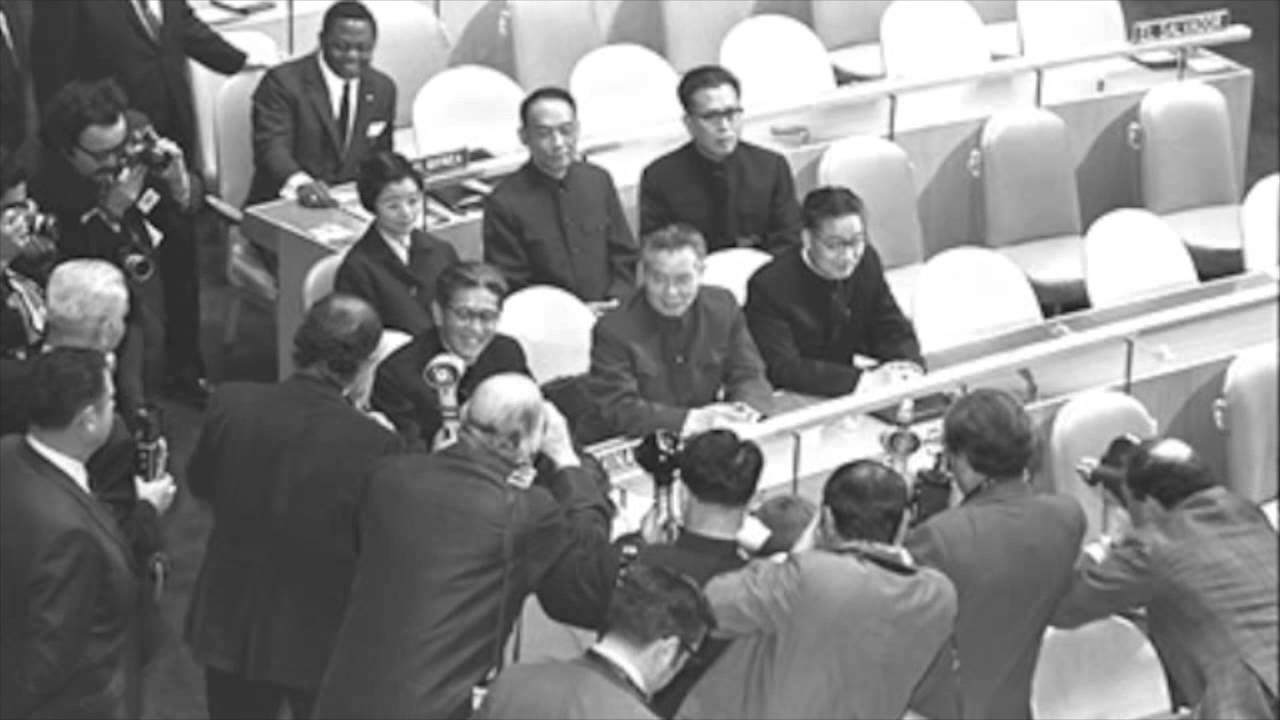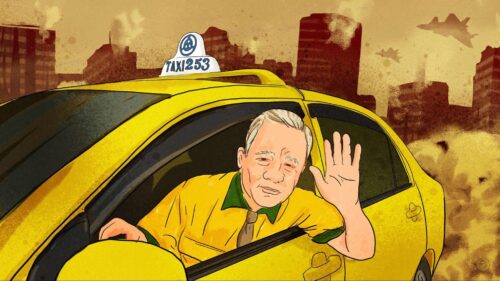This Week in China’s History: October 25, 1971
On October 25, 1971, the United Nations General Assembly voted on Resolution 2758. It read, in part, that the United Nations “decides to restore all its rights to the People’s Republic of China and to recognize the representatives of its Government as the only legitimate representatives of China to the United Nations.” The same resolution would “expel forthwith” the representatives of the Republic of China: Taiwan.
The delegation from Taiwan — which is to say, the Chinese delegation — did not see the vote. Taiwan’s UN Ambassador, Liu Chieh (刘锴 Liú Kǎi), anticipating what was about to happen, strode to the podium and declared that his government would no longer participate in any deliberations by the body. He then left the rostrum and led his delegation from the hall to polite handclapping. The final tally for Resolution 2758, 76 in favor, 35 opposed, with 17 abstentions, ”brought delegates to their feet with wild applause,” the New York Times reported.
The events of autumn 1971 were the climax of a drama that was nearly as old as the United Nations itself. China had been an original signatory to the UN Charter. Even before that, in the so-called Declaration of the United Nations issued on January 1, 1942, the Republic of China joined with the United States, the Soviet Union, and Great Britain to pledge themselves to a unified war effort against Germany and Japan and refusing a separate peace. Twenty-two more nations signed the next day.
Those 26 nations formed the basis for the discussions to establish a United Nations organization. Eventually 50 states that had declared war against Germany and Japan convened in San Francisco to work out a framework for an unprecedented attempt at global cooperation. The United Nations was considered officially established on October 24, 1945, when a majority of the 51 states that had signed the charter (Poland, although not present in San Francisco, was also considered a charter member) — and all of the so-called “Big Five” — had ratified the treaty. Those five were the United States, Soviet Union, Britain, France…and China. And of course, in 1945, there was no People’s Republic of China. It was the Republic of China, led by Chiang Kai-shek (蒋介石 Jiǎng Jièshí) and represented by premier T.V. Soong (宋子文 Sòng Ziwén), with its capital at Nanjing, that was one of the founding members.
Just under four years later, the People’s Republic of China, victorious in a civil war against the Nationalist government that had helped establish the UN, claimed to be China’s rightful government. Right away, some states moved to seat the new government. Predictably, communist states sided with the PRC, but some others — most notably Great Britain — lobbied for including the much larger People’s Republic as well. And in any case, it did not appear that the impasse would last long. In January 1950, U.S. President Truman made clear that “the U.S. government will not provide military aid or advice to Chinese forces on Formosa,” part of a raft of statements by U.S. government officials implying that they expected, and accepted, the imminent fall of Taiwan to PRC forces.
This changed dramatically six months later when the Korean War escalated “Cold War” tensions in Asia. (It is worth noting that the so-called Cold War was almost always hot in Asia, and just about everywhere except Europe and North America.) Taiwan, along with South Korea and Japan, became key U.S. allies. Keeping Taiwan — the Republic of China — in the UN’s “China” seat was now essential for American foreign policy goals. New members could be admitted to the United Nations — and routinely were — by a simple majority vote after recommendation from the Security Council. But this was not a simple question of admitting a new state. At issue was how to determine the legitimate government for an existing member. The Nationalists, though now confined to Taiwan, maintained that the Republic of China still existed and retained its right to representation. The People’s Republic held the opposite view. The Republic of China had U.S. military and diplomatic support; the PRC had Soviet support, and the demonstrable fact that it administered more than 99% of territory and population that both governments claimed to represent.
So starting in the fall of 1950, UN members began annually to enact one of the more public and arcane dramas of the Cold War. Each fall, the United Nations General Assembly rejected motions — the technical question being voted on varied somewhat each year — intended to change Chinese representation in the UN from the Republic of China (on Taiwan) to the People’s Republic (on the mainland). However, the margin became steadily narrower, from six in favor and 33 opposed in 1950 to 34 in favor and 42 opposed (with 22 more abstaining) in 1960.
Seeing the trend, the United States changed its tactics. Starting in 1961, the U.S. began introducing motions that made changing China’s representation in the UN an “important question,” thus requiring a two-thirds margin to pass. These resolutions passed throughout the 1960s, and so although the margins continued to narrow — in 1970 a majority in the General Assembly voted in favor of seating the PRC for the first time — the two-thirds bar remained out of reach.
In the summer of 1971, change was expected. Many Western countries had already backed the PRC, including close American allies like Great Britain, Italy, and Canada. Kissinger’s trip in July had shown that American attitudes — and actions — toward the People’s Republic were changing. A “two China” solution that would seat the PRC while letting the ROC remain in the UN was popular with UN member states, which wanted neither to kick out a charter member nor deny representation to the world’s most populous country, but neither Taipei nor Beijing was interested in that approach.
The dramatic moment of the evening was not as much the vote on seating Beijing as the earlier vote on the annual U.S.-sponsored motion to classify China’s representation as an “important” question. Even American allies had come to see this strategy as a parliamentary gimmick intended to thwart the majority. When the tote board in the chamber showed that the American resolution had been defeated 59-55, jubilation erupted in the general assembly (a display that American UN Ambassador George H.W. Bush declared “an ugly spectacle” in an interview a few days later). And Taiwanese ambassador Liu Chieh made his speech before withdrawing his delegation from the room rather than watch the day’s inevitable conclusion. As devastating as it was for the government on Taiwan, this was a major international shift, one that commentators called “the greatest defeat for the United States in the history of the United Nations.”
Beijing’s diplomats took their seats in the General Assembly on November 15, and as a permanent member of the Security Council a week later. Meanwhile, Taiwan’s delegation withdrew from New York and the island entered a new, even less certain, phase of its existence. Few people in those East Side corridors that autumn would have guessed that a half-century later, Taiwan’s status would remain unresolved and essentially unchanged.
This Week in China’s History is a weekly column.






